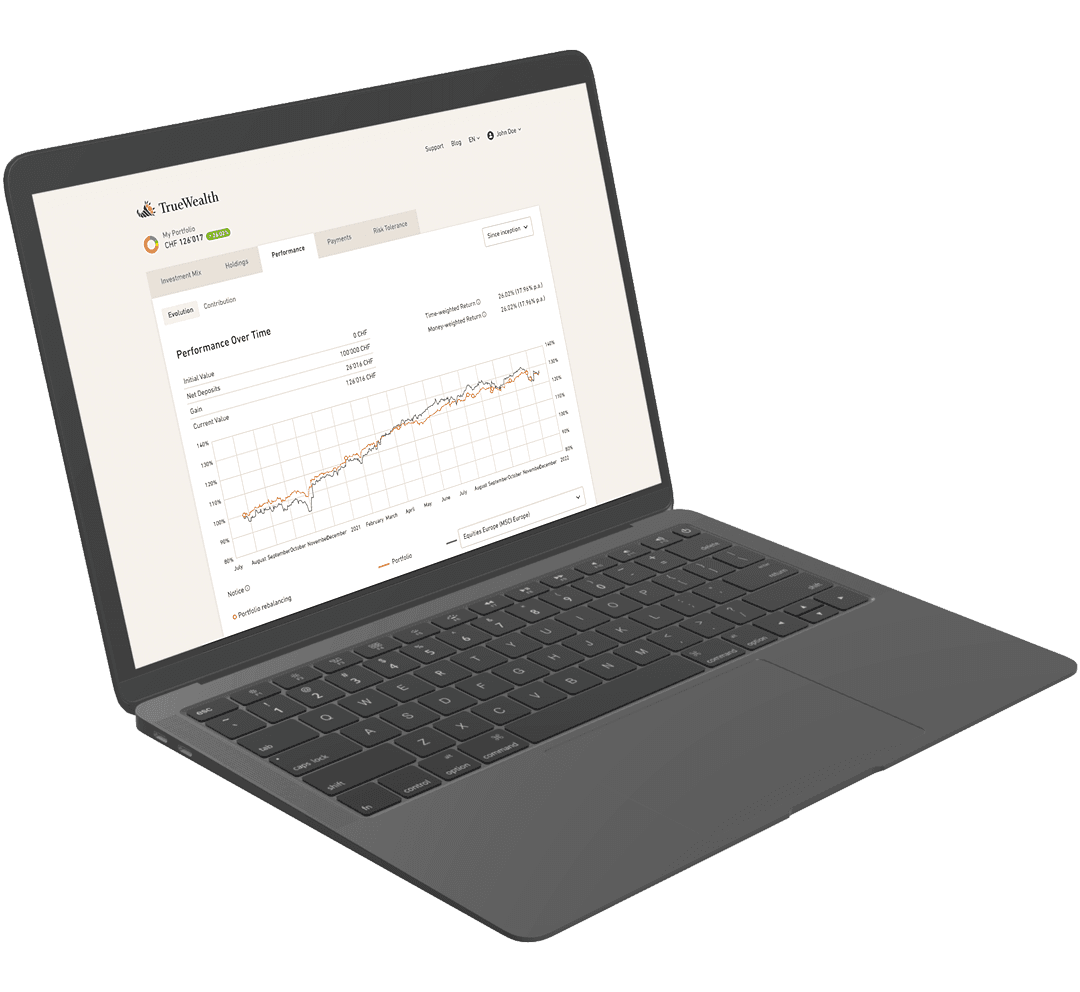Is currency hedging (FX hedging) part of the recommended investment mix?
Yes, we use currency hedging to reduce the volatility of the portfolio and improve the risk-adjusted return. This applies both to investments in untied assets and to Pillar 3a. Currency hedging can be deactivated if desired.
The lower (more bond-heavy) the portfolio risk, the higher the degree of currency hedging and vice versa. A globally diversified portfolio is not only subject to fluctuations in the asset classes in local currency, but also to exchange rate fluctuations against the CHF.
For low-risk investors, it is common to hold a higher proportion of CHF bonds, as foreign investments would be too risky due to exchange rate fluctuations. Currency hedging also allows risk-averse investors to invest more in foreign investments and thus take advantage of a broader range of investment opportunities.
A certain amount of currency hedging can also make sense for a portfolio with medium to high risk: By reducing the currency risk, investors can make better use of their personal «risk budget» and, for example, take on a higher equity exposure or weight certain economic sectors and world regions more heavily. Partial currency hedging improves the risk/return ratio.
Currency-hedged instruments used to have higher product costs (TER) and spreads, which is no longer the case to the same extent and has influenced our attitude to this topic.
For more information on currency hedging, the associated costs and how we deal with it, please see our video podcast.
More questions in "Investment process"
Can’t find what you’re looking for?
Contact us
Ready to invest?
Open accountNot sure how to start? Open a test account and upgrade to a full account later.
Open test account